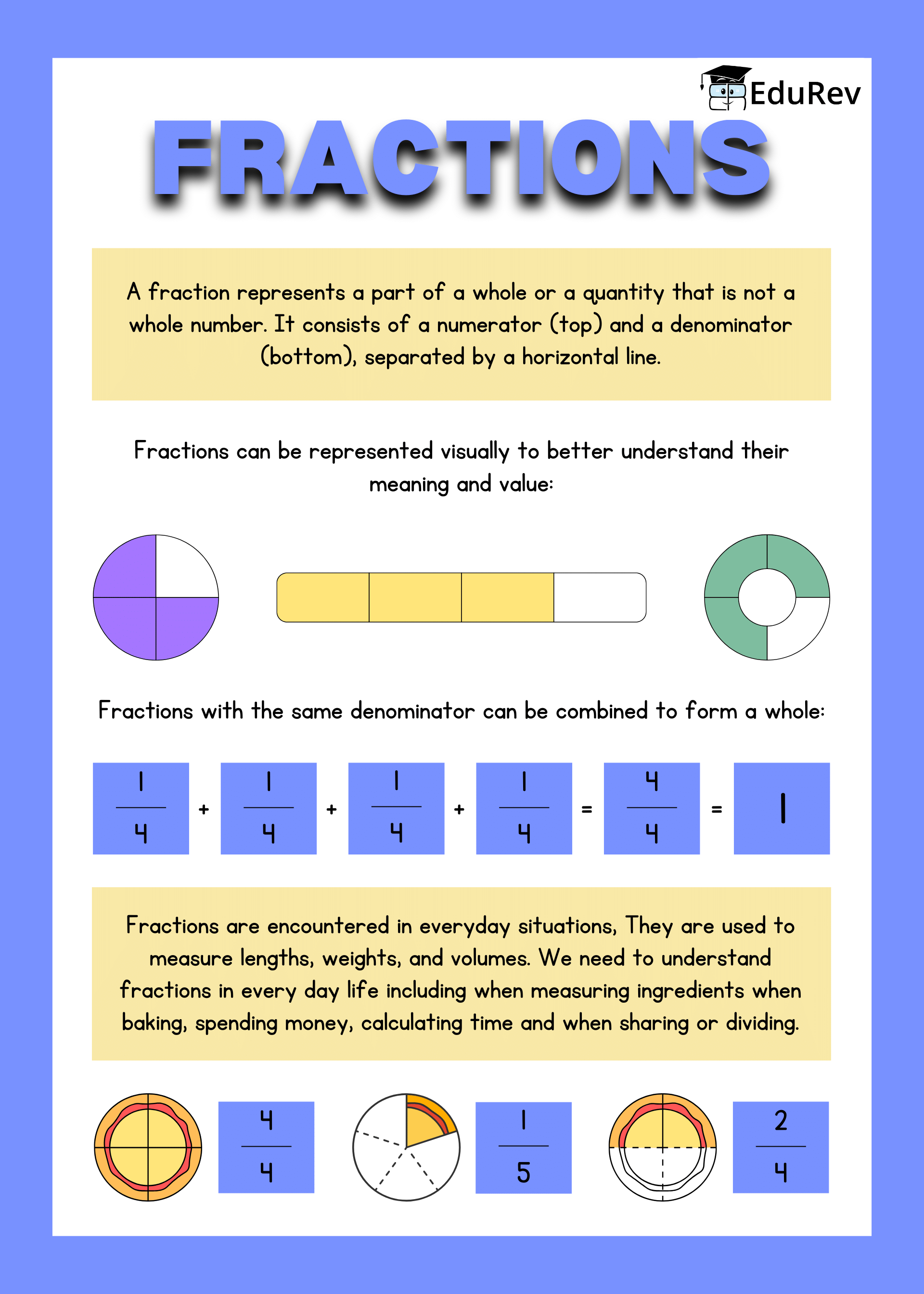Class 6 Exam > Class 6 Notes > Mathematics for Class 6 > Learning Poster: Fractions
Learning Poster: Fractions | Mathematics for Class 6 PDF Download

The document Learning Poster: Fractions | Mathematics for Class 6 is a part of the Class 6 Course Mathematics for Class 6.
All you need of Class 6 at this link: Class 6
|
53 videos|362 docs|23 tests
|
FAQs on Learning Poster: Fractions - Mathematics for Class 6
| 1. What are fractions and how do they work? |  |
Ans. Fractions represent a part of a whole. They consist of two numbers: the numerator (the top number) and the denominator (the bottom number). The numerator indicates how many parts we have, while the denominator shows how many equal parts the whole is divided into. For example, in the fraction 3/4, 3 is the numerator and 4 is the denominator, meaning we have three out of four equal parts.
| 2. How do you add and subtract fractions? |  |
Ans. To add or subtract fractions, they must have the same denominator (the bottom number). If they do not, you need to find a common denominator. Once they have the same denominator, you can add or subtract the numerators while keeping the denominator the same. For example, to add 1/4 and 2/4, you simply add the numerators: 1 + 2 = 3, so the answer is 3/4.
| 3. What is the difference between proper and improper fractions? |  |
Ans. A proper fraction is when the numerator is less than the denominator (e.g., 3/4), meaning it represents a value less than one. An improper fraction, on the other hand, occurs when the numerator is equal to or greater than the denominator (e.g., 5/4 or 4/4), which can represent a value equal to or greater than one. Improper fractions can often be converted to mixed numbers.
| 4. How do you convert a fraction to a decimal? |  |
Ans. To convert a fraction to a decimal, divide the numerator by the denominator. For example, to convert 1/4 to a decimal, you would divide 1 by 4, which equals 0.25. This process works for any fraction, and the result can be rounded to the desired number of decimal places if necessary.
| 5. What are equivalent fractions and how can you find them? |  |
Ans. Equivalent fractions are different fractions that represent the same value. To find equivalent fractions, you can multiply or divide the numerator and denominator of a fraction by the same non-zero number. For example, 1/2 is equivalent to 2/4 because both represent the same amount.
Related Searches
















